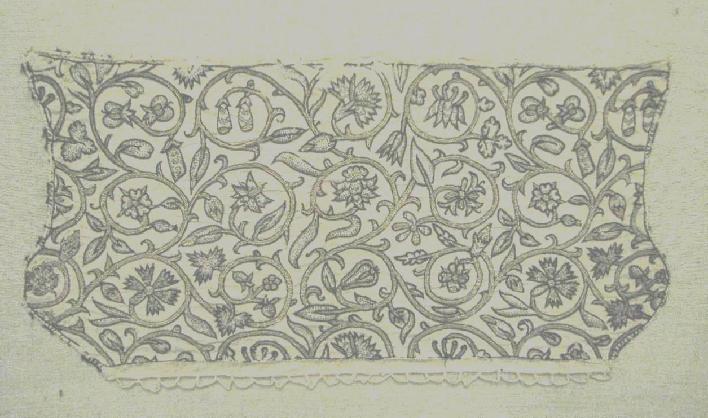As the July challenge for the Historical Sew Monthly was "Accesories", I decided that it was time to finish my basic coif I started long ago, to have something to wear with my red tudor dress. (The dress can be seen in the wardrobe, where I wear it with a borrowed coif. ) I aimed for something that would be fitting for a lower or middle class English women in around the 1560-1570's, something like this picture.
 |
| Coif with forehead cloth ; Civitates Orbis Terrarium |
 |
| The finished coif |
When I was finished however I ran into problems - I did not understand how it was supposed to stay on my head. I went looking on the internet. It seemed that I was not the only one wondering on how to make it stay on. Plastic combs sewn into the coif was suggested, a solution that seemed practical but unsatisfactory to me. I have lots of hair - surely I should be able to wear a coif in a period way? This was when I ran into Laura Mellins excellent page with a discussion on why this was not the way to construct and wear a coif. She argues that all surviving coifs from around this period are in one piece (except the forehead cloth), not three, and also that it is not plausible that a working woman's headwear would not be well secured on your head. How could you work if your headwear keeps falling of? In the article, and citing lots of period sources to back up her arguments, she shows how to made a one piece coif and achieve the right shape by tying its ties around a large hair bun. A forehead cloth tied on first serves to anchor the coif further. I then decided I needed to make another coif, and try this construction method as well.
I made this one unlined, as someone stated that coifs could be both lined and unlined, and lining a simple linen coif did not seem to be needed. After all it could easily be washed, and there is no embroidery to protect on this one. It is cut in the same shape as some extant coifs. I followed the pattern and instruction on this page. The page has good instructions for both wearing and making this type of coif, as well as pictures of different varieties of it. When making it up, the fabric is folded, and the top edge is seamed to be the seam at the top of the head. The "bulges" at the side that can be seen in the picture below sits over the ears, and the bottom edge is gathered by a drawstring to be at the neck (hard to explain, but the linked instructions has lots of pictures.)
 |
| Emboidered coif from the Victoria & Albert museum in London |
I also left out the wires, aiming for a very basic coif for a working woman.
 |
| Coif without drawstrings pulled |
 |
| Coif gathered with drawstring, and forehead cloth |
For the HSM facts, final photshot and my experiment with how to make a hairdo, see next post!
Inga kommentarer:
Skicka en kommentar